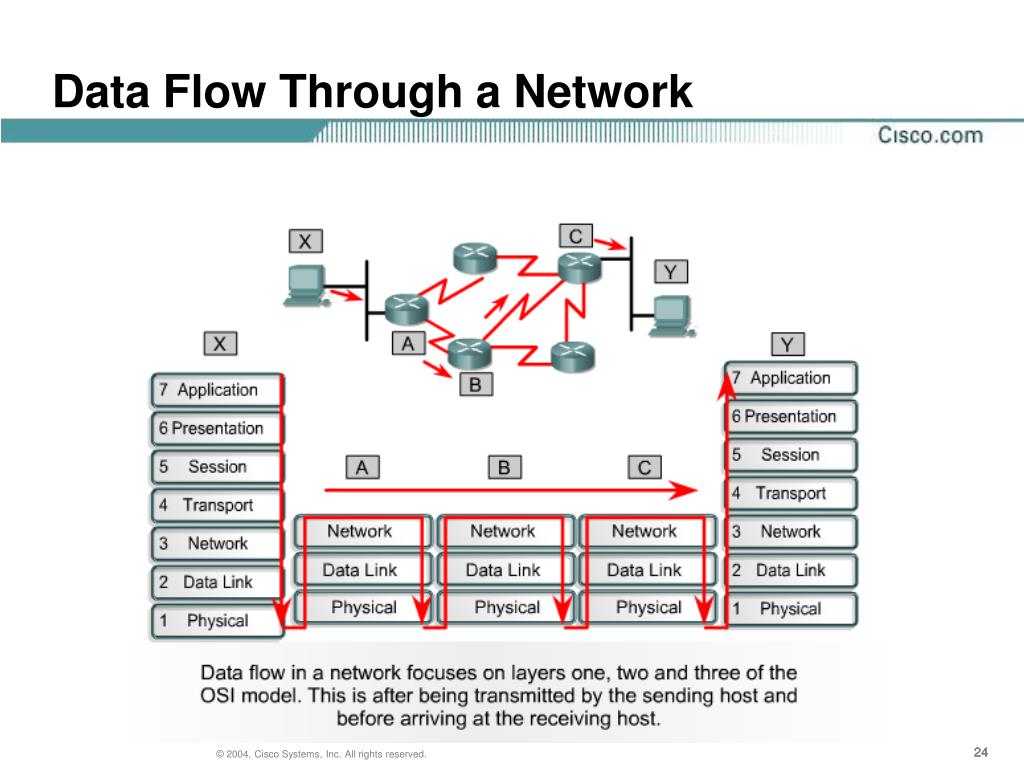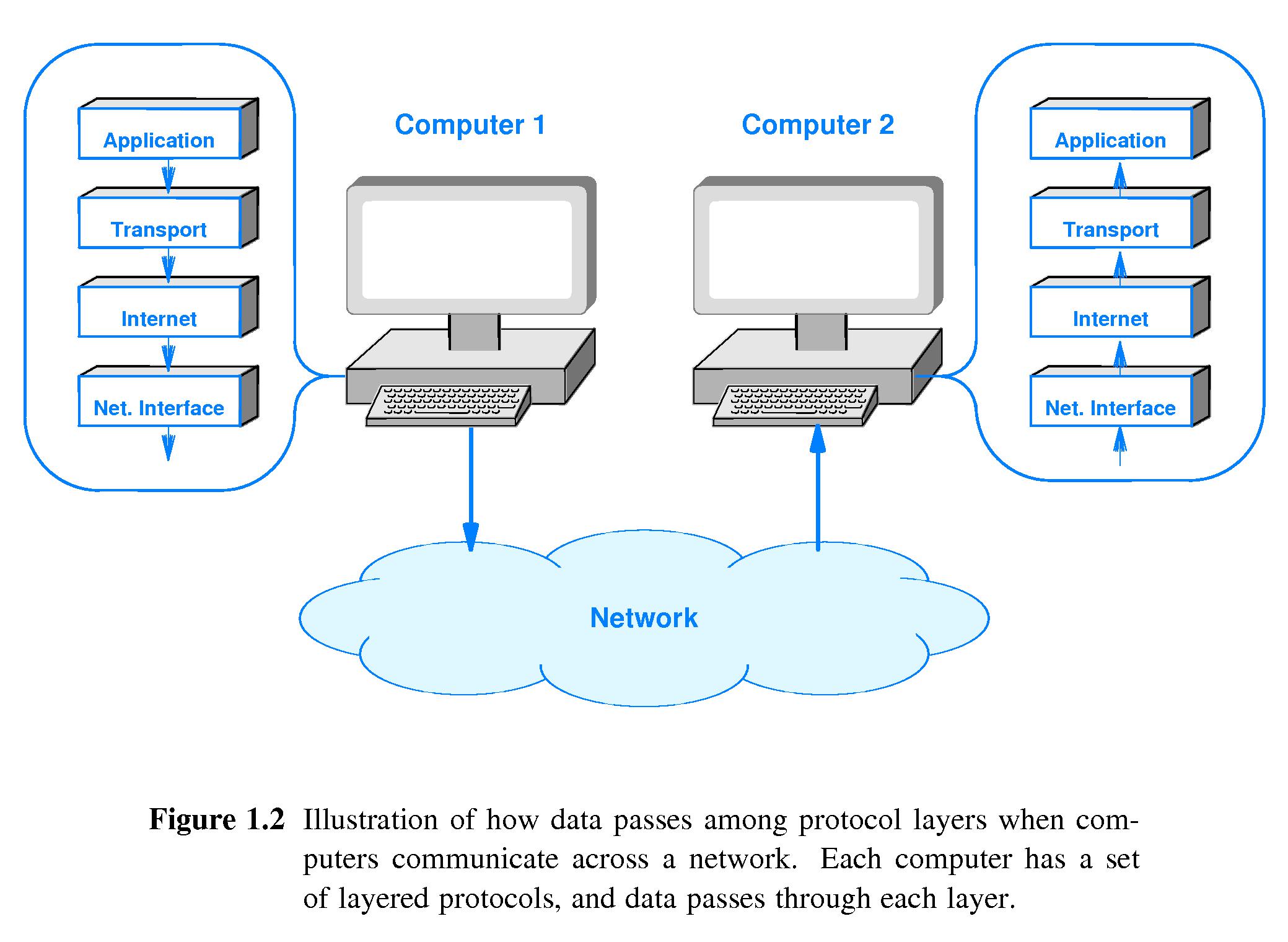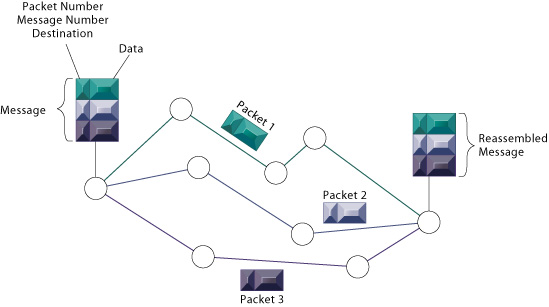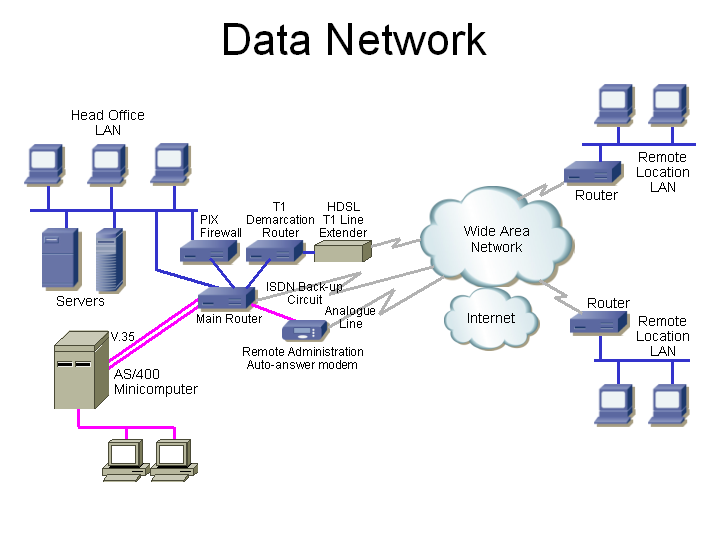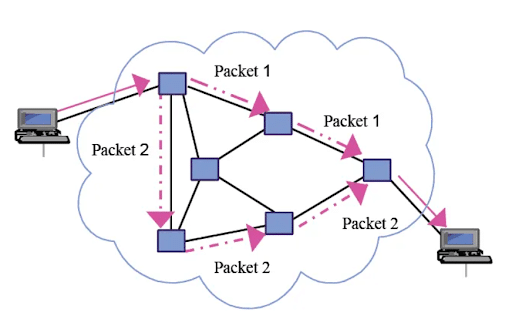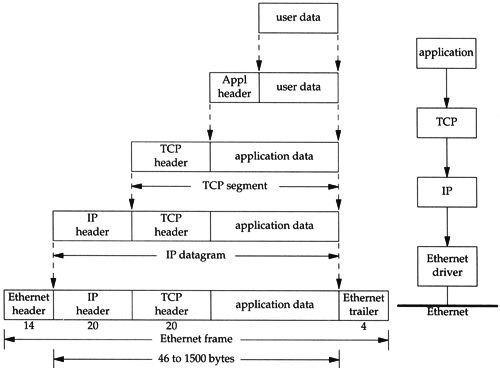Data Are Sent Through A Network In Bundles Called

Imagine a bustling city post office. Trucks rumble up, not with single letters, but with overflowing sacks. Inside each sack, hundreds of envelopes addressed to different people, all bundled together for efficient delivery. The post office sorts these sacks, routes them towards their destinations, and then individual postal workers deliver the letters to each doorstep. This, in essence, is how data travels across the vast digital landscape, only instead of letters, we're talking about bits and bytes, and instead of sacks, we have something called... packets.
This article explores the fundamental concept of data packets, the building blocks of internet communication. These digital envelopes are the unsung heroes that enable us to browse websites, stream videos, and send emails. Understanding how packets work is key to understanding the very architecture of the internet.
The Packet: A Digital Envelope
Data isn't transmitted as one continuous stream. Instead, it's broken down into manageable chunks called packets. Think of these packets as individual pieces of a jigsaw puzzle, each containing a small piece of the overall picture. Each packet has a header containing information, like the destination address and the sequence number of the packet.
The header acts like the address label on our postal envelope, ensuring each piece arrives at the correct destination and in the right order. The actual data being transmitted, the payload, is the content of the letter.
Why Packets? The Benefits of Chunking
Breaking data into packets is crucial for a few key reasons. First, it allows for efficient use of network resources. Multiple users can share the same network connection, with packets from different sources interleaving and sharing bandwidth. This is known as packet switching.
Imagine one person sending a massive file. Without packets, they would monopolize the connection, preventing others from using it. With packets, the file's data is interspersed with data from other users, creating a fairer distribution of bandwidth.
Second, packets enhance reliability. If a single packet is lost or corrupted during transmission, only that packet needs to be retransmitted, not the entire file. This drastically reduces the impact of errors and ensures data integrity.
Finally, packets support different network paths. A single message can be divided into packets and sent along different routes to reach its destination. This is especially useful in networks with multiple pathways, where congestion or outages can be bypassed by choosing alternative routes.
The Anatomy of a Packet: Delving Deeper
While the specifics may vary depending on the network protocol, a typical packet consists of two main components: the header and the payload. The header contains vital information for routing and delivery.
Key elements within the header include: The Source Address which is the sender's IP address. The Destination Address which is the recipient's IP address. The Sequence Number which ensures packets are reassembled in the correct order.
The Payload is the actual data being transmitted. This could be anything from a piece of an email message to a fragment of a video stream. The size of the payload is limited by the network protocol, but it's generally optimized for efficient transmission.
Packet Switching: The Art of Routing
The process of routing packets across a network is known as packet switching. Routers, specialized network devices, act as traffic controllers, examining the destination address in each packet header and forwarding it to the next hop in its journey.
Routers use sophisticated algorithms to determine the best path for each packet. They take into account factors like network congestion, link speed, and the overall topology of the network to make intelligent routing decisions.
The beauty of packet switching is that it allows for dynamic and adaptive routing. If one path becomes congested, routers can reroute packets along alternative paths, ensuring that data continues to flow even in the face of network disruptions.
The Packet's Journey: A Step-by-Step Guide
Let's trace the journey of a packet from sender to receiver. First, the application (e.g., a web browser) divides the data into packets. Each packet is encapsulated with a header containing the necessary addressing and sequencing information.
Next, the packets are transmitted to the network. Routers along the path examine the destination address and forward the packets towards their destination.
As the packets arrive at the destination, they are reassembled based on their sequence numbers. Finally, the reassembled data is delivered to the receiving application.
Protocols and Packet Formats: Different Languages, Different Packets
Different network protocols, such as TCP/IP and UDP, use different packet formats. Each protocol defines its own header structure and payload size.
TCP (Transmission Control Protocol) is a connection-oriented protocol that provides reliable, ordered delivery of data. TCP packets include mechanisms for error detection and retransmission, ensuring that data arrives correctly.
UDP (User Datagram Protocol) is a connectionless protocol that prioritizes speed over reliability. UDP packets are simpler and smaller than TCP packets, making them suitable for applications that require low latency, such as streaming video.
Packets and the Future of Networking
Data packets are not just a historical artifact; they are the foundation upon which the future of networking is built. As networks become more complex and data demands increase, the principles of packet switching will become even more important.
Emerging technologies like Software-Defined Networking (SDN) and Network Function Virtualization (NFV) rely heavily on the flexibility and efficiency of packet-based communication. These technologies allow networks to be dynamically configured and managed, optimizing performance and resource utilization.
Furthermore, the rise of the Internet of Things (IoT) is generating an explosion of data, with billions of devices connected to the internet. Packet switching will be essential for managing this massive influx of data and ensuring that it reaches its intended destinations efficiently and reliably.
A Humble Hero, Often Unseen
The data packet, a seemingly simple concept, is the backbone of the modern internet. It’s a testament to the power of breaking down complex problems into smaller, more manageable pieces.
While we may not think about them as we browse the web or stream our favorite shows, these digital envelopes are constantly at work, silently and efficiently carrying information across the globe. Understanding their role is a key to appreciating the intricate and interconnected world we live in.
So, the next time you send an email or watch a video online, take a moment to appreciate the humble data packet, the unsung hero of the digital age. It is a vital piece of the internet's puzzle, one that keeps us connected and informed.

